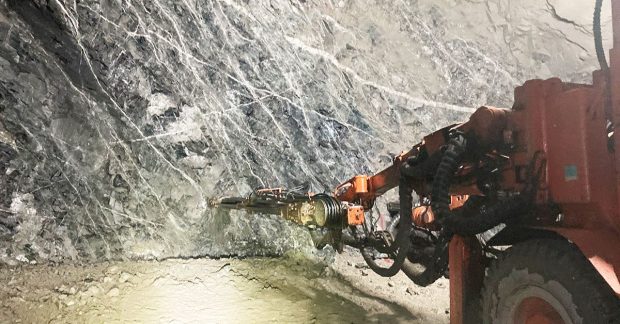Tungsten Holds Secret Grip on Smartphone Manufacturers, Connected Economy

Tungsten is a key raw material of the connected economy. This metal is an integral part of semiconductors, batteries, the vibrators in phones and the electrical circuit boards for the screens in phones.
“Right now, if you look at technology metals, tungsten is the most widely used across all technologies,” Lewis Black, CEO of Almonty Industries, told PYMNTS. “It’s a very peculiar metal, making it very difficult to produce, but it’s also in absolutely every part of your life.”
It’s also a metal that is subject to supply chain and geopolitical risks, as 83% of the world’s production of tungsten comes from China and 6% or 7% comes from Russia. To say the latest wave of COVID infections in China and the Russia-Ukraine war have led to uncertainty around its supply is putting it mildly.
A Great Deal of Tension
While there had been a prolific tungsten industry globally, that began to change in the 1980s when China arrived on the market and drove most producers out of business. Today, although there are still reserves in other countries, there are few tungsten mines outside of China and Russia, including one in Portugal owned by Almonty Industries and one in Austria owned by Sandvik.
China gained its market share with low prices and has maintained it by making it very easy to buy tungsten — it carries stock, it has the inventory and it has the shipping lines. Because of that, there hasn’t been an incentive to open mines in other countries that have regulations, nongovernmental organizations and voters that are not supportive of mines.
See also: Global Semiconductor Crisis Spurs Action by US, the EU — and Chip Makers Themselves
Nations are scrambling to address the shortfall. South Korea, for instance, recently signed an agreement with Almonty and rare-metal recycling company Hannae For T to boost its strategic reserves by promoting recycling.
Black believes that such initiatives will become more common as governments and businesses grapple with shortages while trying to minimize environmental impact.
“I think that creates a great deal of tension for the future,” Black said. “On one hand, we make a continued push towards greater levels of transparency and ESG, and we try and lead our lives as integrated into our communities and into our environment, and be respectful of both — but on the other hand, the very building blocks that we require for our manufacturing cannot adhere to those same principles.”
Option 1: Stockpiling
Black sees two options for dealing with this Catch-22. One is a solution that the United States employed during the Cold War: stockpiling essential raw materials a federal agency called the Defense Logistics Agency (DLA).
“Stockpile strategy is an efficient and effective short-term solution to at least shielding yourself temporarily from geopolitical risks while you work out the bigger picture of what are you going to do about having a greater diversity in your supply chain,” Black said.
Although the DLA still exists and still has that mandate, it continues to sell down its Cold War stockpiles of tungsten and other raw materials — but it now has only a three-year stockpile of tungsten. Black said the agency should instead stop selling down those stockpiles and start acquiring raw materials that are considered strategically important.
Option 2: Diversification of Supply
The second option Black sees is to start laying the groundwork for mines that will give manufacturers an alternative source of tungsten. That idea isn’t generally popular with Western voters, but Black said that’s a hurdle that governments must get over.
“Governments have to say, ‘Look, we know it’s not popular, we know we’re not going to get any votes for this, and it’s a long-term project,’” Black said.
Opening a mine in the U.S. takes eight to 10 years inclusive of the identification, planning, permitting, financing, building and commissioning, Black said. He added that modern mines have minimal impact on their surroundings.
An Opportunity to Sell a Responsibly-Sourced Phone
Looking ahead, Black said a solution will be driven by the manufacturers that need tungsten. In fact, it will become a sales point, because it will give them an opportunity to offer consumers a responsibly-sourced phone.
“The level of transparency they will demand will ensure that there will have to be further diversification, and so [the] industry will provide it,” Black said. “It does mean higher raw material costs for a number of years — I think you’re looking at least a decade of strong commodity prices — because this is a huge shift.”
Related: The ConnectedEconomy™ Monthly Report: Mapping Digital Behavior Across U.S. Regions
